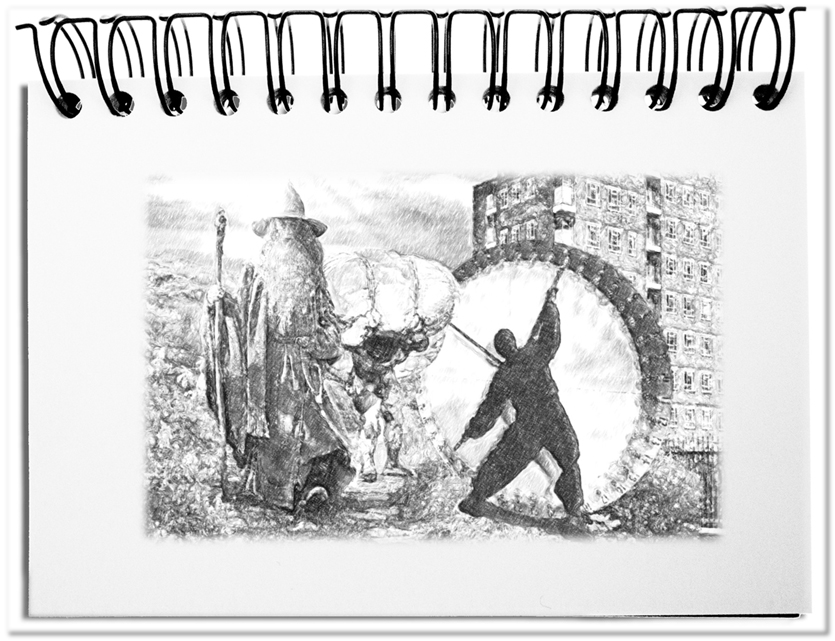Since the beginning of the information age, employment has shifted away from physical to mental work. These services, which are no longer assigned in small tasks to individual workers, are fulfilled responsibly by employees and management staff. With the digitalization, automated routines are now being transferred to the virtual world. The logic of the business must be processed in such a way that the computers can be fed with appropriate algorithms. This requires knowledge that goes beyond the previous execution of subtasks. The corresponding abilities are no longer characterized by the specific knowledge of experts, but by a general understanding of the respective business models and subject areas (see here). The design of the coming world is temporarily taken over by internal and external consultants, who support the full-time employees. The necessary roles go from visionaries, to activists, to knowledge-line workers.
The three types of consultants are called magicians, makers as well as co-workers and differ as follows.
- The Magicians
This type of consultant, who is concentrated on the future, has answers for fundamental questions of the business. The business base is challenged by political, economical, sociocultural, technological, legal and ecological influences. The workforce and the management team are part of the problem and professionally blinkered. The only other option to the external consultants would be internal lateral thinkers, who are given the freedom to think differently. Unfortunately these types of employees are systematically pushed out of the company. As a result, only external suggestions can map out the need for action, trigger the change and accompany the implementation from a neutral perspective. The most important skills of these catalysts are a good understanding of current trends, practical opportunities and systemic interrelations. In addition, such advisors must be convincing spokespersons because they have to reach and convince all levels in the company. The consultations require a lot of management confidence, since they have far-reaching consequences for the company. The difficulty, the duration and the risk of implementation, as well as the few fitting consultants, result in relatively high prices. - The makers
The most effective type of consultant is the temporarily pro-active executive, who steps up to the plate and solves problems. It is all about the implementation of new business models, procedural and organizational structures, mergers and joint ventures, the introduction of new IT systems or technologies. Employees and managers must replace old approaches with unknown new ones. This challenges the applied routine and the everyday culture. Internal managers have understandably difficulties, as they also have to overcome the usual procedures and frameworks. At least during the transition, this is particularly difficult. The old system has to continue being controlled and at the same time the new one has to be introduced. The external consultants, who are deployed as an interim manager or project manager, are free from internal business legacies and obligations, which allow them to take better care of the new. Due to the temporary assignment, the change makers will be at a certain point in time gone and thus avoid stresses in the long-term internal cooperation. Usually these managers have a good political feel, great abilities of integration and the strength to assert oneself. In these cases the degree of difficulty and the risk of implementation as well as the size of the company determine the costs. The relatively high availability of these makers results in medium-range prices. - The Co-workers
The most favorable type of consultant is the co-worker, who performs routine tasks. Many companies, with their efforts to improve the efficiency of their services, have increasingly outsourced more and more work and bundled the remaining tasks with fewer and fewer employees. This concentration of work at the single workplace leaves the employee no air to breathe. The tasks, which are not yet automated or which can not be done with the computer, can no longer be managed internally. In order to maintain an ongoing operation and for keeping the desired service quality, it is necessary to deploy additional employees. The newly created liberation of the labor market allows the temporary employment of people, outside the implemented regulations for full-employment. At first sight, this saves costs, since the management of this workforce can be done with little effort and the liabilities are limited. However, the set-up times, the continuous flow of knowledge out of the company and the regulations to be taken into account (for example, no name plate, and no internal telephone number) burden the deployment. But the difficulty level and the risk of the deployment are low. Countless companies have specialized on employing such workers and to hire them to large companies. These co-workers are flexible and adaptive and form the lower price segment of consultancies.
Bottom line: The consulting industry has evolved into a broad-based business. The highly paid magicians cover the strategic areas. The makers are the practical realizers. The co-workers with their routine services form the majority of the consultants. In all cases, the consultants provide the necessary impulses to enable a company to develop further.

